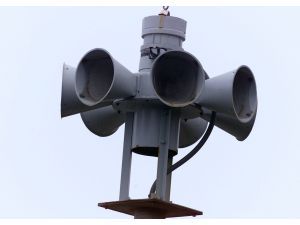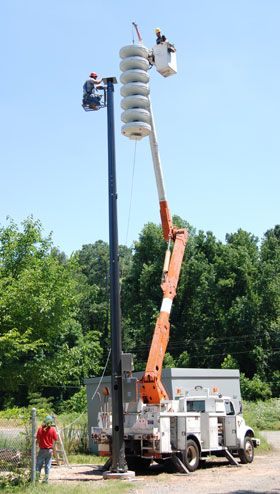
Emergency planning in the nuclear industry has evolved over the years. Most feel emergency planning and preparedness was born in 1979 and had more importance placed on it as part of industry standards after the Three Mile Island nuclear incident. Emergency preparedness continues to evolve within the nuclear industry, and is a collaborative effort between utilities, counties, states and federal agencies.
Emergency nuclear sirens are owned and installed by Duke Energy around its nuclear stations. They are pole-mounted safety sirens and extend out for a 10-mile radius in the communities surrounding the plants. In the unlikely event of an emergency at a nuclear plant, the sirens located in the 10-mile emergency planning zone (EPZ) can be activated to alert the public to the situation. The sirens sound for three-minute intervals if there is an emergency that could affect the public. In addition to notifying residents of nuclear emergencies, some counties also use the sirens to alert the public to other issues such as potential flooding, tornadoes and hurricanes. If there were an emergency around a nuclear station, Duke Energy would notify county, state and federal officials who would make the decision regarding sounding the sirens. The nuclear alert notification system sirens are part of the Emergency Alert System (EAS). Hearing a siren does not mean individuals should evacuate. The siren warning system is to prompt individuals located outdoors to go and listen to their local radio or television for an emergency alert system message.
Sirens are activated from a radio-controlled system, and are regularly tested to make sure they work properly. Residents within the 10-mile EPZ are provided information on siren test dates and times. There are several types of siren tests performed at different times – some weekly, monthly or quarterly. “Silent tests” confirm that the radio feedback system receives a signal. A “low growl” test verifies proper operations as well as radio feedback signal receipt, and results in a momentary sound, or growl, of the siren. A full volume test results in the sirens sounding for several minutes. If sirens are heard and residents are not sure if it is a test of the system or an emergency, they should tune to a local radio station or television station. If there is an emergency, the stations will interrupt regular broadcasting to provide information to the public.

All nuclear facilities have multiple backup safety systems to ensure safe operations. Additionally, emergency exercises are conducted with plant personnel and state and county officials participating to ensure the emergency plans are effective and participants are well trained.
Sirens provide another layer of protection that can be utilized to ensure public health and safety.


